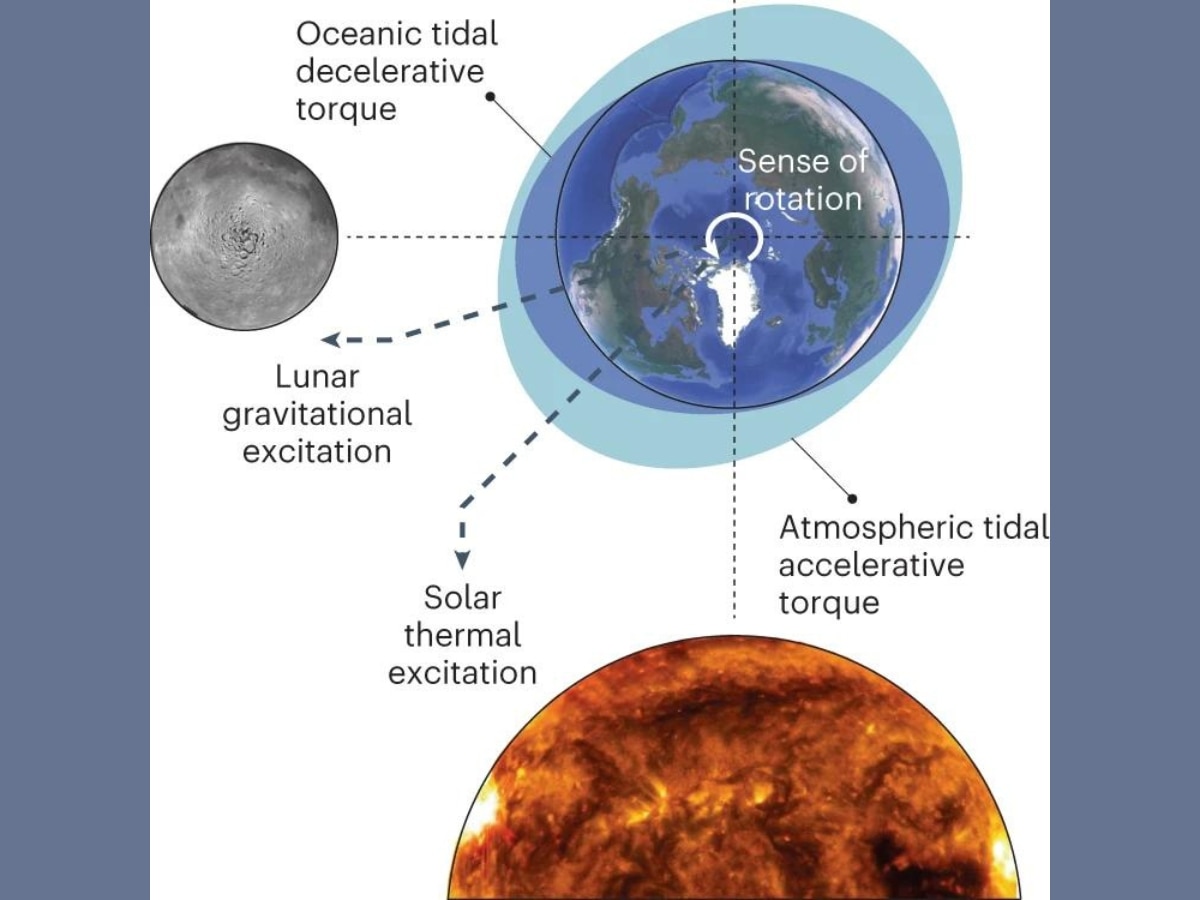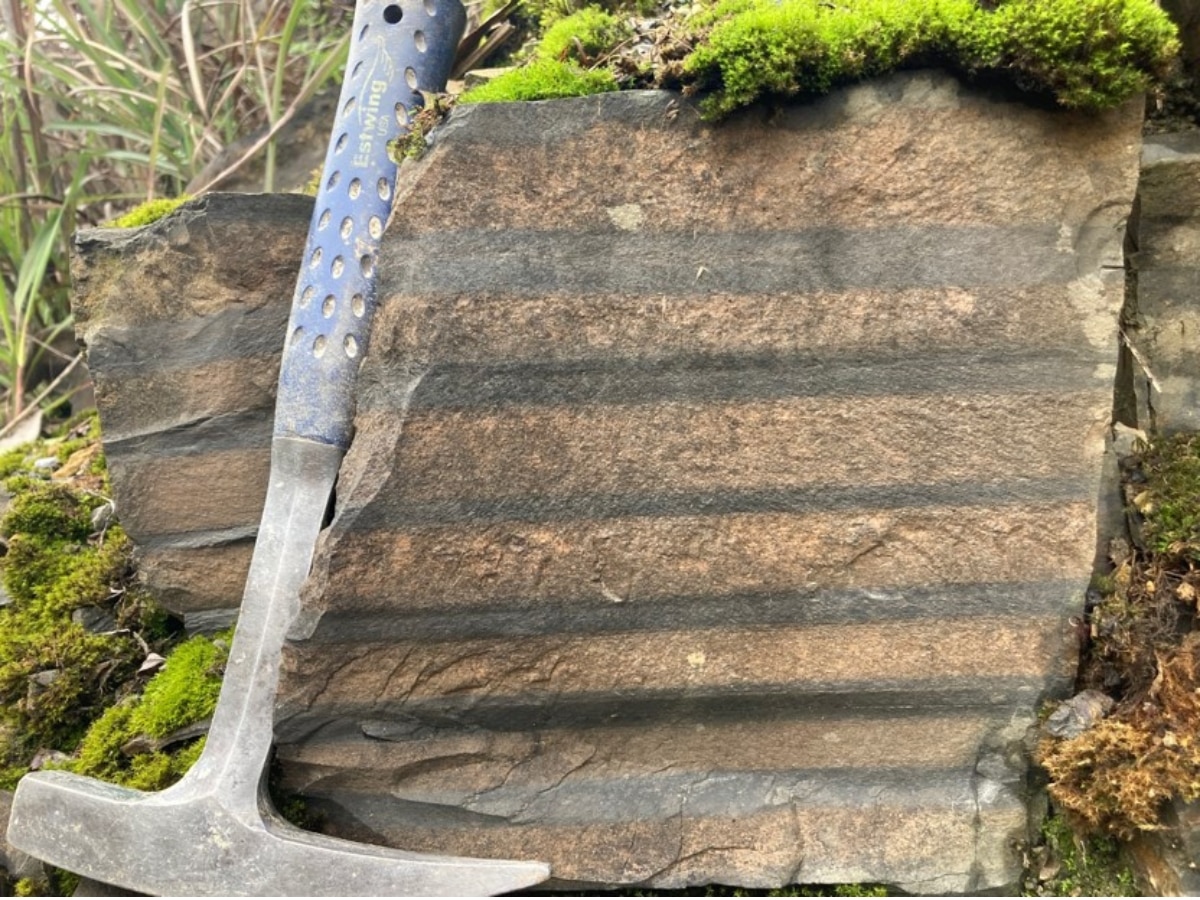For A Billion Years In The Past, Earth Had 19-Hour Days, Study Suggests
In the mid-Proterozoic era, Earth's day length was equal to about 19 hours due to tidal phenomena. The day length was equal to about 19 hours for about one billion years.

Earth takes 24 hours on an average to complete one rotation about its axis. Oftentimes, 24 hours seem less when one has a lot of tasks to complete. However, if we lived in the past, it would have been more difficult. This is because there was a time when Earth had 19-hour long days for a billion years, a new study, published June 12 in the journal Nature Geoscience, says.
Earth's current solar day consists of about 24 hours. This is the amount of time required by the blue planet to complete one rotation so that the Sun appears in the same position in the sky. The reason why Earth's solar day is not exactly equal to 24 hours is that the Earth's revolution around the Sun causes the planet to move a bit along its orbit each day, as a result of which some more rotation is needed for a particular meridian to point back towards the Sun. Based on this longer definition of one rotation, modern day clocks consider the average of all solar days in a year, which is equal to 24 hours.
What was Earth’s day length during the mid-Proterozoic era?
In the mid-Proterozoic era, Earth's day length was equal to about 19 hours due to tidal phenomena. The Proterozoic era was the period of Earth's history that began 2.5 billion years ago and ended 543 million years ago.
ALSO READ | Stars Of Early Galaxies Emitted Enough Light To Ionise Surrounding Gas And Make It Transparent, Webb Proves
Why did Earth have a shorter day length? For how long did the planet have short days?
The study says that the day length was equal to about 19 hours for about one billion years during the mid-Proterozoic. The reason why the day length was shorter was because the Moon was closer to Earth.
Tidal resonance was responsible for stalling the day length during the mid-Proterozoic.
The Moon is responsible for oceanic tides, while the Sun results in atmospheric thermal tides. The study suggests that during the mid-Proterozoic era, the torque of lunar oceanic tides was decelerative, which means that tides drained energy out of Earth's rotation, and slowed the planet down. Meanwhile, the torque of atmospheric thermal tides driven by solar energy was accelerative, which means that thermal tides increased Earth's rotation, and had the tendency to make it spin faster. Together, the accelerative and decelerative torques temporarily stabilised Earth's rotation, and stalled the day length. It was also a period of relatively limited biological evolution known as the boring billion.
In the past, solar atmospheric tides were as strong as lunar oceanic tides. The tug of the Moon would have been much weaker because the Earth was rotating faster in the past, compared to the present rotation speed.
The Moon had a pulling effect on Earth, while the Sun's tide pushed the planet. Overall, these two effects stabilised the rotation of Earth. This phenomenon has been referred to as the tidal resonance in the study.

How has the Moon obtained a higher orbit farther from Earth over time?
In a statement released by the Chinese Academy of Sciences, Ross Mitchell, a geophysicist at the institute, and lead author on the new paper, said the Moon, over time, has stolen Earth's rotational energy to boost it into a higher orbit farther from Earth. This means that every time the Moon drains out Earth's rotational energy, the planet spins slower, and its natural satellite moves higher up in its orbit. A slower rotation means a longer day.
Uwe Kirscher, a co-author on the paper, said most models of Earth's rotation predict that day length was consistently shorter and shorter going back in time.
How are ancient day lengths measured?
In past decades, researchers measured ancient day length using records from special sedimentary rocks which preserve very fine-scale layering in tidal mud flats, which are coastal wetlands that form when mud is left behind by tides or rivers. The number of sedimentary layers formed each month by tidal fluctuations was equal to the number of hours in an ancient day, the statement said.
What is cyclostratigraphy?
However, not only are such tidal records rarely found, but those preserved are often disputed.
Therefore, scientists prefer a method called cyclostratigraphy over counting sedimentary layers.
Cyclostratigraphy is a geologic method in which scientists detect astronomical "Milankovitch" cycles using rhythmic sedimentary layering.
What are Milankovitch cycles?
Milankovitch cycles reflect how changes in Earth's rotation and orbit affect climate.
The fact that the long-term, collective effects of changes in Earth's position relative to the Sun strongly drive Earth's long-term climate, and are responsible for triggering the beginning and end of glaciation periods, was hypothesised by Serbian scientist Milutin Milankovitch, more than a century ago.
According to NASA, Milankovitch studied how variations in three types of Earth orbital movements affect how much solar radiation reaches the top of Earth's atmosphere. The amount of solar radiation received over a given surface in a given period of time is called insolation. These cyclical orbital movements of Earth are known as Milankovitch cycles.
Milankovitch cycles result in variations of up to 25 per cent in the amount of incoming insolation at Earth's mid-latitudes, which refer to the areas of the planet located between about 30 and 60 degrees north and south of the equator.
According to NASA, the Milankovitch cycles include the shape of Earth's orbit, which is known as eccentricity; the angle Earth's axis is tilted with respect to Earth's orbital plane, known as obliquity; and the direction Earth's axis of rotation is pointed, which is known as precession.
Relation between Milankovitch cycles and Earth’s rotation in the past
In the Chinese Academy of Sciences statement, Kirscher explained that precession and obliquity, which are related to the wobble and tilt of Earth's rotation axis in space, determine the rotation of Earth.
Shorter precession and obliquity cycles in the past mean a faster rotation of Earth.
How the study was conducted
More than half of the data for ancient times was generated in the past seven years, and Mitchell and Kirscher took advantage of the multitude of Milankovitch records.
The researchers studied a 600-million-year-old sedimentary rock that preserved Milankovitch cycles. This allowed them to detect Earth's ancient day length.

Interesting findings of the study
Kirscher said in the statement that due to tidal resonance resulting from the opposing effects of atmospheric thermal tides and lunar ocean tides, Earth's day length stopped changing and remained constant for some time.
The new compilation data proved this theory. Earth's day length stopped at 19 hours roughly between two to one billion years ago. These were referred to as the billion years or the boring billion.
Surprisingly, the period when Earth's day length stalled lies between the two largest rises in oxygen.
This means that photosynthetic bacteria, the first oxygen-producing organisms on Earth, had to wait for longer days to generate more oxygen each day, the study states. This explains Earth's rise to modern oxygen levels at a time when the planet's day length increased.
Related Video
Southern Rising Summit 2024: How Important is Self-Awareness? Insights from Anu Aacharya | ABP LIVE







































